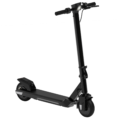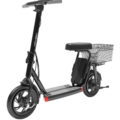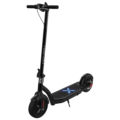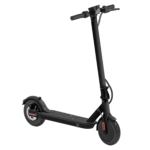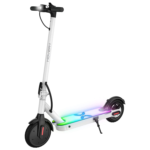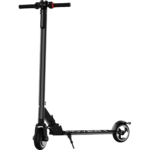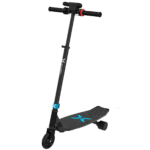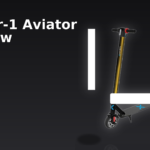- Home
- Scooters
- Electric Scooters
- Hover-1 Helios
Hover-1 Helios


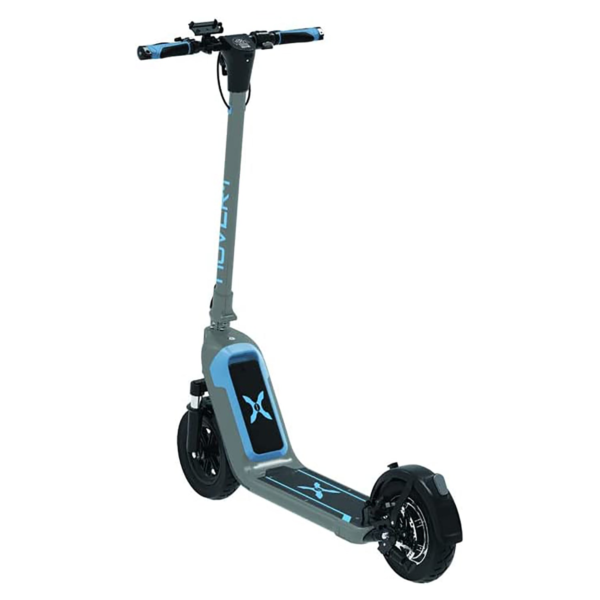

- Battery Range: 24 miles (39 km)
- Top Speed: 18 mph (29 km/h)
- Motor Power: 500 W
- Weight Capacity: 264 lb (120 kg)
- Charging Time: ≈5 h
- Scooter Weight: 40.3 lb (18.3 kg)
PROS
- 10″ pneumatic tires
- Dual front suspension
- Front drum + rear disc brakes
- LCD display with indicators
- Higher 264 lb (120 kg) capacity
CONS
- IP rating not listed
- No app features specified
- Heavier than entry-level models
Table of contents
- What Is the Hover-1 Helios?
- How the Hover-1 Helios Works
- Key Specifications
- Design & Build Quality
- Performance Fundamentals
- Battery, Range & Efficiency
- Ride Quality & Comfort
- Braking & Safety Features
- Portability & Daily Usability
- Maintenance & Care
- Weather & Seasonal Considerations
- Hover-1 Helios vs Alternatives
- Who the Hover-1 Helios Is (and Isn’t) For
- FAQs
- Glossary
- Closing Thoughts
The Hover-1 Helios is a 500-watt, full-size adult electric scooter built for short commutes and relaxed city rides. It balances approachable power with comfort features, including dual front shocks, 10-inch pneumatic tires, and both a front drum and rear disc brake. If you’re familiar with compact campus scooters like the Hover-1 Alpha Pro, the Helios feels like a calmer, more comfort-focused step up—still easy to ride, yet steadier at speed.
Additionally, it suits first-time riders who value stability, clear controls, and low-maintenance habits. Yet it also serves returning riders who prefer a calmer 18 mph (30 km/h) top speed, straightforward folding, and a practical deck that handles everyday loads up to 240 lb (110 kg) without fuss.
What Is the Hover-1 Helios?
In essence, the Hover-1 Helios is a street-oriented, foldable electric scooter with a rated top speed of up to 18 mph (30 km/h) and a manufacturer-claimed range of up to 24 miles (38 km) per charge. It uses a 36 V, 10 Ah lithium-ion battery pack and a 500 W brushless rear hub motor. Furthermore, the scooter rolls on 10-inch pneumatic tires and adds dual front suspension to smooth out cracks and expansion joints. Braking is split: a front drum brake resists dirt and spray, while a rear disc brake adds bite. Meanwhile, an LED cockpit display keeps essentials visible at a glance, and the deck integrates a removable battery secured by keys.
In practice, this combination places the Helios in a “comfort commuter” category. It favors steady cruising, sure-footed starts, and predictable stopping over raw speed. Moreover, it arrives with a fitted phone mount, a headlight, a rear brake light, and a basic bell—useful touches that reduce the need for early upgrades.
How the Hover-1 Helios Works
At a glance, the Helios works like most urban scooters; however, a few details are worth calling out, since they shape the ride.
Motor and controller. A 500 W brushless hub motor in the rear wheel provides drive. The controller meters power based on throttle position and speed mode (Eco, Default, or Sport). Because brushless architecture improves efficiency and durability, it helps range and reduces routine service.
Battery and charging. A 36 V, 10 Ah lithium-ion battery sits inside the scooter and is removable using the supplied keys. You charge with the included 1-pin cable and wall adapter. Typically, a full charge takes up to five hours. Consequently, you can restore a day’s commute during an afternoon or evening break without strain on your schedule.
Throttle behavior. The right-hand thumb throttle delivers power smoothly. For safety, kick-to-start is enabled by default, so the scooter must be rolling about 1.8 mph (3 km/h) before the motor engages. This design prevents accidental take-offs if you bump the throttle while stationary.
Brakes. The front wheel uses a drum brake housed inside the hub. The rear wheel uses a cable-actuated disc brake. Together, this pairing gives consistent wet-weather friction at the front and sharper lever feel at the rear. As a result, you get linear control from neighborhood speeds down to a stop.
Cruise control. Hold a steady speed for roughly eight seconds and cruise control clicks on. Tap the throttle or squeeze a brake to cancel. Therefore, wrist strain drops on longer bike-path stretches, and speed holds steady on gentle grades.
Key Specifications
Below is a clean, scannable summary. Values appear in both imperial and metric where provided by the manufacturer.
General
- Model: H1-HLOS
- Recommended rider age: 16+
- Minimum rider weight: 88 lb (40 kg)
- Maximum supported weight: 240 lb (110 kg)
Performance & Power
- Motor: 500 W brushless rear hub
- Top speed: Up to 18 mph (30 km/h)
- Claimed max range: Up to 24 miles (38 km)
- Ride modes: 1 = Eco, 2 = Default, 3 = Sport
- Cruise control: Yes (auto-engages after steady speed)
Battery, Charging & Electrical
- Battery type: Lithium-ion (removable with keys)
- Battery voltage / capacity: 36 V / 10 Ah (360 Wh nominal)
- Charge time (0–100%): Up to 5 hours
- Charger input: 100–240 V AC, 50/60 Hz
- Display: LED screen (speed, mode, battery, trip/odo, headlight indicator)
- Lights: LED headlight, rear brake light
Build & Dimensions
- Tires: 10 in pneumatic (front and rear)
- Suspension: Dual front shocks
- Folded size: 44.5 × 20.2 × 20.47 in (113 × 51 × 52 cm)
- Unfolded size: 44.5 × 20.3 × 46.8 in (113 × 51.5 × 119 cm)
- Weight: 40.3 lb (19 kg)
- Kickstand: Yes
- Included: Phone mount, battery keys, charger
Safety & Control
- Brakes: Front drum + rear disc
- Kick-to-start: On by default (can be disabled)
- Bell: Yes
- Reflectors: Not equipped from the factory
- Water resistance: No rating listed; avoid water exposure
Features & Extras
- Cruise Control: Yes (auto after ~8 s steady speed)
- Speed Modes: Eco / Default / Sport
- LED Lights Button: Dedicated headlight toggle
- Phone Mount: Included clamp with hex-screw install
Warranty & Compliance
- Warranty: 1-year limited parts and labor
- UL certification: UL2272 listed
- FCC compliance: Part 15 (FCC ID 2AANZHLOS)
These official specifications set clear expectations for size, speed, range, and equipment, so you can plan daily use confidently.
Design & Build Quality
The Hover-1 Helios aims for a sturdy, commuter-friendly design rather than ultralight portability. The stem, fork, and deck form a continuous structure with smooth transitions and few exposed edges. Fit-and-finish sits above what you’d expect at this price tier: cable routing is tidy, the cockpit plastics align cleanly, and the folding latch engages with a reassuring snap.
Up front, dual shocks add compliance before the tire even reaches a sharp crack or seam. They are small coil units with modest travel, intended for everyday urban chatter rather than off-road hits. Even so, they measurably soften impacts that would otherwise transfer straight to your hands. Consequently, you feel less sting on rough patches and expansion joints.
The deck runs long and flat, which helps stance adjustments. Riders with larger shoe sizes can line up one foot forward and one angled without feeling cramped. Meanwhile, the kickstand sits centrally under the deck and flips down quickly, which is handy during short stops outside a store.
The cockpit is straightforward. On the left, you get a brake lever and bell. In the center, you’ll see the LED display and headlight button. On the right, you have a brake lever, the power button, and the thumb throttle. The included phone mount installs with a small hex screw on a base above the display. Once tightened, it holds a typical smartphone securely for route glance-checks or ride data apps. Additionally, the bar width offers steady leverage for quick corrections without feeling twitchy.
As for folding, you release the clip at the stem collar, fold the stem toward the deck, and hook it to a latch near the rear fender. The folded shape stays compact in height and width, which matters in elevators and car trunks. However, at just over 40 lb (19 kg), the Helios still carries noticeable mass on stairs. Therefore, plan your route if you face multiple flights.
Performance Fundamentals
Acceleration feel. In Sport mode, take-offs feel smooth rather than snappy. The 500 W hub pulls consistently once the scooter rolls past the kick-to-start threshold. Therefore, parking lot starts feel controlled, and lane merges on shared paths remain predictable. Eco and Default modes reduce throttle aggression, which helps when riding near pedestrians or within crowded campuses.
Cruising stability. The Helios tracks straight at 12–15 mph (19–24 km/h). The 10-inch pneumatic tires contribute a calm, planted feel, and the steering stays neutral. Because the front end carries dual shocks, the headset experiences less chatter, which reduces arm fatigue on longer rides. At the top speed, keep weight centered and knees soft; the scooter remains composed on clean pavement. Nevertheless, scan ahead for seams and patches, since any small-wheel scooter will respond to abrupt edges.
Hill-climb behavior. On modest grades of 7–10%, the motor will slow, as expected for a 500 W class. With a lighter rider, it holds mid-teens speeds on short rises. With a heavier rider, it may drop into the 8–12 mph (13–19 km/h) range on steeper sections. Use Sport mode for hill approaches, and build speed before the slope. Because the rear hub supplies torque directly at the wheel, traction stays reliable if you stand relaxed and keep weight slightly aft. Even so, avoid abrupt throttle chops mid-slope, since re-applying power can feel jerky on tight climbs.
Battery, Range & Efficiency
Rated vs. real-world range. The claimed maximum is up to 24 miles (38 km). Real outcomes vary with rider weight, temperature, wind, hills, stops, and speed mode. On flat terrain with a 160–180 lb (73–82 kg) rider, mixed Eco/Default modes, and steady 10–14 mph (16–22 km/h) cruising, a practical number often lands well into the teens. Conversely, Sport-mode sprints, frequent stops, and cold weather will trim that figure noticeably.
Removable pack advantages. Because the 36 V, 10 Ah battery is removable, you can charge it indoors without lugging the entire scooter. You can also store the pack at a partial charge during long off-weeks. That habit helps longevity, especially if the scooter lives in a hot garage during summer. Moreover, swapping in a spare (if you own one) extends daily range without changing the scooter’s setup.
Charging best practices.
- First, let the scooter and charger rest at room temperature before charging.
- Next, keep the charge port clean and dry; align the single-pin lead gently.
- Avoid routinely charging from 0% to 100%. For daily use, 20–90% is a good window.
- If storing for more than a month, leave the battery around half full and check it monthly.
- Finally, never cover the charger with fabric during use; give it ventilation.
Cold and heat. Lithium cells dislike extremes. Below about 40°F (4°C), the pack will deliver less current, and range drops. In very hot conditions, both performance and cell life suffer. Whenever possible, ride and charge within moderate temperatures. Consequently, plan indoor charging on days with frost or heat advisories.
Ride Quality & Comfort
Tires. The 10-inch pneumatic tires are the biggest comfort win on the Helios. They roll smoothly across coarse pavement and mute step-joints better than small solids can. They also improve grip on damp surfaces compared with plastic-feeling rubber compounds. Additionally, they allow slightly lower pressures for comfort, provided you stay within the sidewall range.
Suspension. The front shocks take the edge off curb cuts and bridge seams. Travel is modest, so you still should unweight the front over larger bumps. Still, the extra compliance reduces hand sting, which matters across longer trips. As a result, fatigue stays lower, and steering inputs remain precise.
Ergonomics. The deck length supports a staggered stance, and the bar width offers stable leverage during quick steering corrections. Throttle throw feels natural; you can make small speed changes without wrist strain. Because cruise control activates after a short hold, you can rest your thumb on mellow routes. Meanwhile, the bell and brake levers sit within easy reach for quick reactions.
Stem flex. With the folding latch properly locked, stem flex stays mild. You may feel a hint of play when hopping off a curb ramp or making hard braking inputs, which is normal for a folding commuter design. Check the latch tension occasionally to keep that sensation minimal. If you notice new play, tighten the adjuster a quarter turn and test again.
Braking & Safety Features
Dual-system brakes. The front drum brake delivers steady friction in everyday grit and resists contamination from spray. The rear disc brake gives firmer bite and better modulation when you need to scrub speed quickly. Use both levers for the shortest, straightest stops. Consequently, stopping distances shrink, and the scooter remains composed.
Lights and visibility. The Helios includes an LED headlight and a rear brake light. The light button near the display lets you toggle the headlight quickly. Because the scooter does not ship with reflectors, add reflective tape to the sides of the deck and helmet for side visibility. Likewise, consider a helmet-mounted flasher for higher eye-level attention during dusk rides.
Kick-to-start and speed modes. The default kick-to-start reduces unintended launches. Meanwhile, three speed modes let you tailor power. Use Eco around pedestrians, Default for daily cruising, and Sport for hills or short merges. Cruise control can be handy on longer bike-path runs; cancel it quickly with a brake lever or a throttle tap.
Riding conditions. The Helios lists no water-resistance rating, and the manual advises against riding in rain or through puddles. Therefore, plan dry-weather routes, slow down on dusty surfaces, and avoid loose gravel. If you do encounter wet patches, steer smoothly and brake earlier than usual.
Portability & Daily Usability
Weight and carry. At 40.3 lb (19 kg), carrying the Helios up a flight or two is manageable but not light. Fortunately, the folded height is just above 20 inches (52 cm), which makes elevator rides and car-trunk loading easier than the weight suggests. The stem hook and rear latch keep things together while you lift. Even so, use both hands on stairs for stability.
Folding routine. The latch at the stem collar feels positive. Close it fully before riding and verify the secondary clip engages. When folded, the scooter sits stable on its side or with the kickstand out, so you can stage it neatly under a desk. Additionally, the compact width fits beside a backpack without blocking foot space.
Storage. If you live upstairs, consider leaving a small towel to wipe the tires before bringing the scooter inside. Because the battery is removable, you can leave the Helios in a storage closet and charge the pack on a desk or countertop. Moreover, indoor storage protects bearings and brakes from condensation and grit.
Security habits. The frame gives limited closed shapes for U-locks; however, you can pass a quality chain around the deck subframe and a fixed rack. Always remove accessories, keep the battery out of sight, and park in visible, well-lit areas. Finally, record the serial number and take photos for insurance.
Maintenance & Care
Before each ride
- First, check tire condition and feel for normal pressure by thumb (verify with a gauge weekly).
- Next, squeeze both brake levers to confirm firm engagement.
- Ensure the folding latch is fully locked.
- Finally, verify lights, display, and horn/bell function.
Weekly
- Inspect tires for embedded debris; remove carefully.
- Wipe the stem and deck, especially around the latch and hinge.
- Check brake cable housing for kinks and confirm the caliper bolts are snug.
Monthly
- Gauge tire pressure and set to the range on the sidewall.
- Inspect the rear disc pads for wear; adjust the cable if lever throw grows long.
- Confirm the stem latch hardware is tight; a quarter turn of the adjuster can remove play.
Battery care
- Keep charge cycles shallow when possible.
- Store the pack between 20–80% if the scooter sits for more than a week.
- Avoid leaving the charger connected overnight after it turns green.
- If performance drops abruptly, balance charge to 100% once, then resume partial cycles.
Firmware and app habits
- The Helios display handles core functions from the cockpit, so you can ride without any app. If you do use a generic ride-tracking app on your phone, mount the phone securely and keep notifications minimal while riding. In addition, disable auto-lock to prevent fumbling at traffic lights.
Weather & Seasonal Considerations
Rain. Because the Helios has no stated IP rating and the manual discourages wet use, avoid rain riding. Water can harm bearings, brakes, and electronics. If you’re caught in a drizzle unexpectedly, slow down, avoid standing water, and dry the scooter thoroughly afterward. Then, lubricate the brake pivot and wipe the rotor.
Cold. In cold weather (around 40°F / 4°C and under), expect less range and softer acceleration. Bring the battery indoors to warm gently before charging. Also, check tire pressure more often; pressure drops with temperature. Therefore, plan shorter routes and keep a buffer in your charge level.
Heat. During heat waves, store the scooter in shade and charge in a ventilated room. High heat accelerates battery aging. If the deck or charger feels unusually warm, pause the session and let components cool. Consequently, your pack should retain capacity longer across seasons.
Traction. Painted lines, metal plates, and wet leaves reduce grip. Stay smooth with throttle and brakes, and keep speeds conservative on unfamiliar paths. The 10-inch pneumatic tires help, yet physics still wins on slick surfaces. Thus, stand relaxed with bent elbows, and look where you want to go.
Hover-1 Helios vs Alternatives
Against smaller commuter scooters. The Helios rides more comfortably than short-wheelbase, 8-inch-tire models. The larger pneumatic tires and front shocks absorb more chatter, and the rear disc brake improves control. However, smaller scooters can weigh less and carry more easily on stairs. Consequently, choose based on the balance between comfort and lift-ability.
Against mid-speed performance scooters. Faster models with dual motors or higher-voltage packs climb harder and hold speed on steep grades. They also cost more, weigh more, and demand more attention to braking technique. If you rarely exceed 18 mph (30 km/h), the Hover-1 Helios keeps risk and complexity lower. On the other hand, if you crave sprints and long hills, a higher-power class makes sense.
Against off-road-styled scooters. Big-tire trail machines add longer travel suspension, wider bars, and heavy frames. Those exceed urban needs, feel bulky in apartments, and can be overkill on bike paths. For daily pavement, the Helios remains the practical choice. Still, if you ride gravel frequently, consider wider tires and more travel.
In short, the Hover-1 Helios excels when comfort, predictable stops, and simple charging matter more than top speed.
Who the Hover-1 Helios Is (and Isn’t) For
Ideal for
- Urban commuters covering a few miles each way on bike paths and neighborhood streets.
- Students who want a reliable, easy-to-learn ride between classes and housing.
- Multi-modal travelers who combine bus or train segments with a scooter last mile.
- New riders who value steady power, cruise control, and clear displays.
Not ideal for
- Heavy hill routes with long, steep climbs above 10% grade.
- Wet-weather riders who must ride in rain frequently.
- Weight-sensitive users who need sub-30 lb scooters for daily stair carries.
- Speed chasers seeking 25–30+ mph thrills.
Therefore, if your routes are mostly smooth, your speeds are moderate, and your priorities are comfort and predictability, the Helios aligns well.
FAQs
1) How fast does the Hover-1 Helios go?
It’s rated for up to 18 mph (30 km/h) on level ground in Sport mode. Actual speeds depend on rider weight, battery level, and terrain. Consequently, heavier riders or hillier routes may see lower peaks.
2) What is the real range?
The claim is up to 24 miles (38 km). Real range varies with speed, stops, temperature, and hills. Many riders will see a comfortable mid-teens figure on mixed routes; however, cold days and frequent sprints cut range.
3) Does the Hover-1 Helios have cruise control?
Yes. Hold a steady speed for about eight seconds and cruise control engages. Tap the throttle or squeeze a brake to cancel. Thus, long bike-path segments feel easier.
4) Can I ride in the rain?
The Helios lists no IP rating and the manual advises against wet riding. Avoid rain and puddles to protect brakes and electronics. If surfaces are damp, brake earlier and steer gently.
5) How long does charging take?
A full charge typically takes up to five hours with the included charger. Therefore, an afternoon top-off is feasible between rides.
6) What does “kick-to-start” mean?
The scooter won’t accelerate from a standstill when you press the throttle. You first push the scooter to roughly 1.8 mph (3 km/h), then the motor engages. This reduces accidental take-offs at stoplights.
7) Where can I find a quick Hover-1 Helios overview?
Look for the core points: 500 W rear hub, 36 V 10 Ah removable battery, dual front shocks, 10-inch pneumatic tires, and front drum/rear disc brakes—topped by a steady 18 mph (30 km/h) top speed. In short, that’s the essence.
Glossary
Ah (Amp-hours). A measure of battery capacity. Higher Ah generally means more stored energy at the same voltage.
Wh (Watt-hours). Voltage × Amp-hours; a fuller picture of energy content. Roughly indicates range potential.
Brushless motor. An efficient electric motor design with no brushes to wear. Quieter and lower maintenance.
Controller. The electronic “brain” that meters current from the battery to the motor based on throttle input and mode.
Cruise control. A function that holds a steady speed until you cancel with throttle or brakes.
Kick-to-start. A safety feature that requires the scooter to be rolling before the throttle activates.
Pneumatic tire. An air-filled tire that cushions bumps and improves traction compared with solid tires.
Drum brake. A brake with friction shoes inside a drum; sealed from grime and weather.
Disc brake. A caliper squeezes pads on a metal rotor; offers strong, direct stopping power.
Stem flex. The small, perceptible movement in a folding stem under load; reduced by proper latch tension.
UL certification. A safety certification for electrical systems; UL2272 covers electrical drive and battery systems.
FCC Part 15. U.S. compliance for electronic devices that emit radio frequency energy.
IP rating. A code that describes dust and water ingress resistance. Not listed for this model.
Tachometer (display arc). A graphical indicator that shows relative motor effort or speed on the LED display.
Mode (Eco/Default/Sport). Power maps that alter throttle response and top speed.
Regenerative braking (regen). Motor-based deceleration that returns a small amount of energy to the battery; not listed as a feature here, but common in other models.
Wheelbase. The distance between wheel centers; influences stability at speed.
Closing Thoughts
The Hover-1 Helios focuses on the daily ride: steady 18 mph cruising, dual front shocks for comfort, 10-inch pneumatic stability, and dependable dual mechanical brakes. The removable battery and included phone mount add practical touches, and the cockpit layout keeps operation clear. Consequently, commutes feel calm and repeatable. If your routine favors predictable pavement, moderate speeds, and low-drama maintenance, the Helios checks the right boxes without chasing headline numbers.
Specifications
General
| Model The Model specifies the exact version or name of the scooter. It helps identify its unique design, features, and specifications within the manufacturer’s product line. Knowing the model makes it easier to compare options, find compatible accessories, or look up support information. | Helios |
| Brand The Brand identifies the manufacturer or company that designs and produces the scooter. A trusted brand is a sign of quality, reliability, and good customer support. Well-known brands often have higher standards for safety, performance, and after-sales service, giving you more confidence in your purchase. | Hover-1 |
| Release Date The Release Date indicates when the scooter model was officially launched on the market. This helps you know how current the design, technology, and features are. A newer release date often means updated components, improved performance, and the latest safety or smart features. | 17 November 2025 |
| Recommended Age Recommended Age indicates the minimum age range that the scooter is designed for, based on safety, size, and ease of use. Following the recommended age helps ensure that riders can handle the scooter’s speed, weight, and controls comfortably and safely. Always check local laws and use protective gear, especially for younger riders. | +16 |
Performance & Power
| Motor Power (Wattage) What it means: The motor power, measured in watts (W), shows how strong the scooter’s electric motor is. Why it matters: Higher wattage usually means better acceleration, more torque, and improved performance on hills or rough terrain. For example, a 250W motor is good for flat city roads and light riders, while a 500W or 1000W motor provides more power for faster speeds or climbing steep inclines. | 500 W brushless hub motor |
| Top Speed The Top Speed indicates the maximum speed that the scooter can reach under optimal conditions. It’s usually measured on level ground with a fully charged battery and an average rider weight. A higher top speed allows you to travel longer distances faster, but always ensure you ride within legal speed limits and your personal comfort zone for safety. | 18 mph (29 km/h) |
| Battery Capacity Battery Capacity refers to the total amount of energy the scooter’s battery can store, usually measured in ampere-hours (Ah) or watt-hours (Wh). A higher battery capacity means you can ride longer distances on a single charge, reducing the need for frequent recharging. Keep in mind that actual range can vary depending on rider weight, terrain, speed, and weather conditions. | 36 V 10 Ah (360 Wh) |
| Estimated Range per Charge The Estimated Range per Charge indicates the average distance the scooter can travel on a single full battery charge. This range is calculated under optimal conditions, such as flat terrain, moderate speed, and average rider weight. Real-world range may vary depending on riding style, terrain, weather, and load. A longer range means fewer recharges and greater freedom for longer trips. | up to 24 miles (39 km) |
| Hill Climb Ability Hill Climb Ability describes the maximum incline or slope that the scooter can handle while maintaining stable performance. It’s typically expressed as a percentage or in degrees. A higher hill climb rating means the scooter can tackle steeper hills without losing too much speed or power. Actual climbing performance may vary based on rider weight, battery charge, and terrain conditions. | up to 15° |
| Drive System The Drive System refers to how power from the motor is delivered to the wheels. Electric scooters typically use either a hub motor (directly integrated into the wheel) or a chain/belt drive system. A high-quality drive system ensures smooth acceleration, efficient power transfer, and low maintenance. The choice of drive system affects performance, noise level, and overall ride experience. | Not specified |
Charging & Electrical
| Charging Time Charging Time indicates how long it takes to fully recharge the scooter’s battery from empty to 100% using the standard charger provided. Faster charging means less downtime and more time on the road. Actual charging time may vary slightly depending on battery capacity, charger output, and environmental conditions. | Approx. 5 hours |
| Battery Type Battery Type refers to the specific technology used in the scooter’s battery, which affects performance, lifespan, weight, and charging time. Most modern electric scooters use high-quality lithium-ion (Li-ion) batteries because they offer a good balance of energy density, durability, and low maintenance. A reliable battery type ensures consistent power delivery and longer riding ranges. | Lithium-ion pack (BMS not specified) |
| Removable Battery A Removable Battery means the battery pack can be easily detached from the scooter for convenient charging and replacement. This feature allows you to charge the battery separately, swap it with a spare for extended range, or securely store it indoors in extreme weather. Removable batteries add flexibility and make it easier to keep your scooter powered up wherever you are. | Non-removable internal battery |
| Regenerative Braking Regenerative Braking is an energy-saving feature that converts some of the energy normally lost during braking back into battery power. When you slow down or brake, the motor works in reverse to generate electricity, which helps extend the scooter’s range and improves overall efficiency. This system also reduces wear on traditional brake components, leading to lower maintenance over time. | Not specified |
| Lighting Lighting refers to the built-in front and rear lights that enhance visibility and safety when riding in low-light conditions or at night. Good lighting helps you see the road ahead and ensures that other road users can see you. Many scooters include LED headlights, taillights, and sometimes brake lights or side reflectors for added safety and compliance with local traffic regulations. | LED headlight + rear LED/brake; deck accent LED |
Build & Dimensions
| Scooter Weight Scooter Weight refers to the total weight of the scooter when fully assembled, including the battery. This affects how easy it is to carry, lift, and store the scooter when not in use. A lighter scooter is more portable and convenient for commuting, especially if you need to carry it upstairs or onto public transport. Keep in mind that a sturdy frame and quality components may add to the weight but also contribute to better durability and ride stability. | 40.3 lb (18.3 kg) |
| Maximum Rider Weight Maximum Rider Weight indicates the highest rider weight that the scooter is designed to safely support while maintaining optimal performance and stability. Staying within this limit helps ensure reliable acceleration, braking, and climbing ability, and it protects the frame, suspension, and motor from excessive strain. Exceeding the recommended limit may reduce performance and increase wear on components. | 264 lb (120 kg) |
| Deck Size Deck Size refers to the dimensions of the scooter’s standing platform. A wider and longer deck provides more foot space, allowing you to stand comfortably and adjust your stance while riding. A well-sized deck improves balance and stability, especially on longer rides or at higher speeds. Compact decks, on the other hand, help keep the scooter lightweight and portable. | Low deck; wide standing area |
| Handlebar Height Handlebar Height refers to the distance from the deck to the handlebars, which affects your riding posture and comfort. An appropriate handlebar height helps you maintain good balance, reduces strain on your back and arms, and makes steering more comfortable. Some scooters have adjustable handlebars to fit riders of different heights, while others have a fixed height for a streamlined design. | Fixed |
| Folding Mechanism The Folding Mechanism describes how easily and securely the scooter can be folded for carrying and storage. A well-designed folding system lets you quickly collapse the scooter into a compact size, making it convenient to transport on public transit, store under a desk, or fit into a car trunk. Look for sturdy latches and safety locks to ensure the scooter stays firmly in place when folded or unfolded. | Quick-fold latch |
| Dimensions Folded Dimensions indicate the size of the scooter when it’s fully folded. This measurement shows how much space the scooter will take up when stored or carried, making it easier to check if it will fit in your car trunk, under a desk, or in a closet. Compact folded dimensions are ideal for commuters who need to bring their scooter on public transport or store it in tight spaces. | Folded: 46.3 × 7.7 × 19.6 in (117.6 × 19.6 × 49.8 cm); Unfolded: 48.4 × 21.2 × 47.9 in (122.9 × 53.8 × 121.7 cm) |
| Material Material refers to the primary construction materials used for the scooter’s frame and key components. High-quality materials like aircraft-grade aluminum, reinforced steel, or durable composites provide strength, stability, and a lighter overall weight. A sturdy material ensures the scooter can handle daily wear and tear while maintaining safety and performance. | Aluminum alloy |
Safety & Control
| Brake Type(s) Brake Type(s) describe the braking systems the scooter uses to help you slow down or stop safely. Common brake types include mechanical brakes (like drum or disc brakes), electronic brakes, and foot brakes. Many scooters combine multiple braking systems for added safety and shorter stopping distances. The type and quality of brakes affect your control, especially when riding at higher speeds or on slopes. | Front drum + rear disc |
| Suspension Suspension refers to the system that absorbs shocks and vibrations while riding, providing a smoother and more comfortable ride over uneven or rough surfaces. Scooters may have front suspension, rear suspension, or dual suspension for better shock absorption and stability. Good suspension helps reduce rider fatigue and improves control, especially when riding on bumpy roads or off-road paths. | Front suspension (dual shocks) |
| Tire Type Tire Type refers to the kind of tires the scooter uses, which directly affects ride comfort, traction, and maintenance. Common types include solid (airless) tires, pneumatic (air-filled) tires, or hybrid options. Pneumatic tires offer better shock absorption and a smoother ride on rough surfaces, while solid tires are puncture-proof and require less upkeep. The right tire type helps ensure safe handling and a comfortable ride in different conditions. | 10″ pneumatic street tires |
| Tire Size Tire Size indicates the diameter and width of the scooter’s tires, which affect ride comfort, stability, and how well the scooter handles different terrains. Larger tires generally offer better shock absorption and a smoother ride over bumps and rough surfaces, while smaller tires keep the scooter lighter and more portable. Choosing the right tire size helps ensure a balance between agility and comfort. | 10-inch |
| Kickstand The Kickstand is a built-in stand that allows you to park your scooter upright when it’s not in use. A sturdy kickstand keeps the scooter stable and prevents it from tipping over, protecting it from scratches and damage. It also makes storing and accessing your scooter more convenient, whether you’re at home, work, or on the go. | Side kickstand |
| Water Resistance Rating Water Resistance Rating indicates how well the scooter is protected against water and moisture, usually shown as an IP (Ingress Protection) rating. This rating helps you understand whether the scooter can handle light rain, splashes, or wet roads without damage. While most scooters are not fully waterproof, a good water resistance rating adds peace of mind when riding in changing weather conditions. Always avoid deep puddles or submerging the scooter to protect its electrical components. | Not specified |
Features & Extras
| Display/Console The Display (or Console) shows important real-time information about your ride, helping you monitor your scooter’s status at a glance. Typical displays show speed, battery level, distance traveled, and riding mode. Some models also include additional features like Bluetooth connectivity, app integration, or backlighting for better visibility at night. A clear and easy-to-read display enhances safety and convenience on every trip. | LCD display (speed, battery, mode, lights) |
| Ride Modes Ride Modes refer to the different speed and power settings you can choose to match your riding style or road conditions. Common modes include eco for maximum range and energy efficiency, standard for everyday balance, and sport or turbo for higher speed and stronger acceleration. Switching between ride modes allows you to customize performance, conserve battery, and ride safely in various environments. | Not specified |
| Smart App Connectivity Smart App Connectivity lets you pair your scooter with a dedicated mobile app via Bluetooth. Using the app, you can monitor real-time ride stats like speed, battery level, and range, adjust settings such as ride modes or cruise control, lock the scooter for added security, and sometimes receive firmware updates. This feature adds convenience and allows you to personalize your riding experience right from your smartphone. | Not specified |
| Anti-Theft System The Anti-Theft System helps protect your scooter from unauthorized use or theft. This feature can include built-in alarms, electronic motor locks, GPS tracking, or remote locking through a mobile app. A good anti-theft system provides peace of mind when parking your scooter in public spaces, adding an extra layer of security to safeguard your investment. | Not specified |
| Cruise Control Cruise Control allows you to maintain a steady speed without continuously holding the throttle. This feature makes longer rides more comfortable by reducing hand fatigue and providing a smoother, more relaxed riding experience — especially on flat, open roads or bike lanes. For safety, cruise control can usually be easily activated or deactivated while riding. | Not specified |
| Accessories Included Accessories Included lists the additional items that come with the scooter to enhance your riding experience and convenience. Common accessories may include a charger, kickstand, bell, lights, phone holder, or carrying strap. These extras add value by making your scooter safer, easier to use, and ready to ride straight out of the box. | Scooter, wall charger, manual |
Warranty & Compliance
| Warranty Period The Warranty Period indicates how long the manufacturer guarantees the scooter against defects in materials and workmanship under normal use. A good warranty provides peace of mind, showing the brand’s confidence in its product quality. Always check what parts are covered, such as the frame, battery, and motor, and follow the maintenance guidelines to keep your warranty valid. | 12 months limited (per product page) |
| Certifications Certifications confirm that the scooter meets specific safety, quality, and environmental standards set by recognized organizations or regulatory bodies. Common certifications may include CE, RoHS, UL, or other local compliance marks, depending on your region. These certifications ensure that the scooter is manufactured to high standards and is safe and legal to use in your country. | UL 2272 battery compliance (brand standard); region-dependent |


